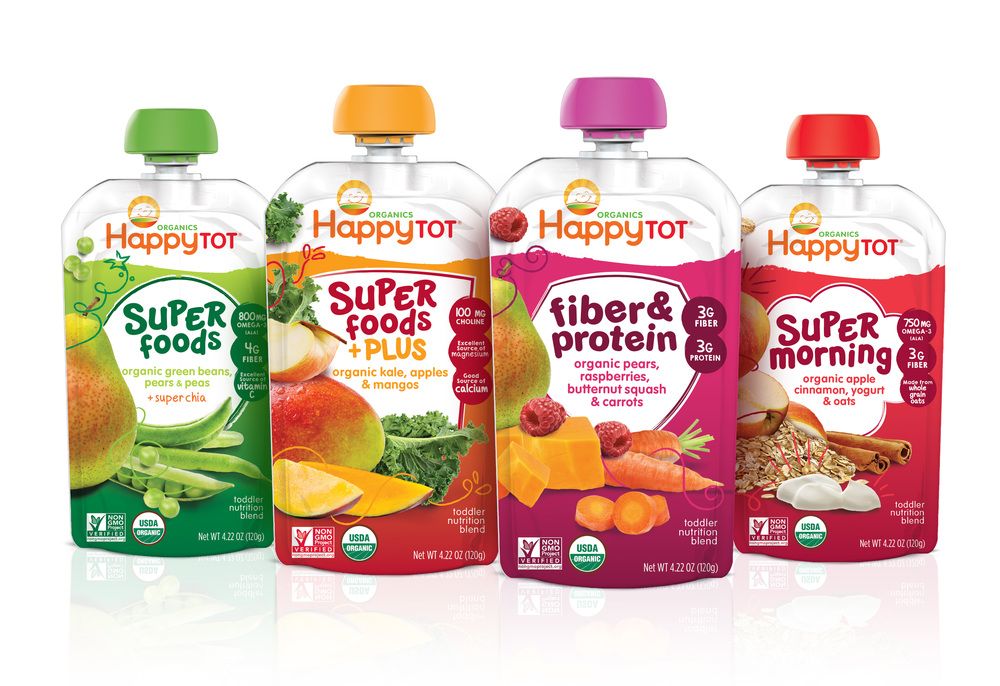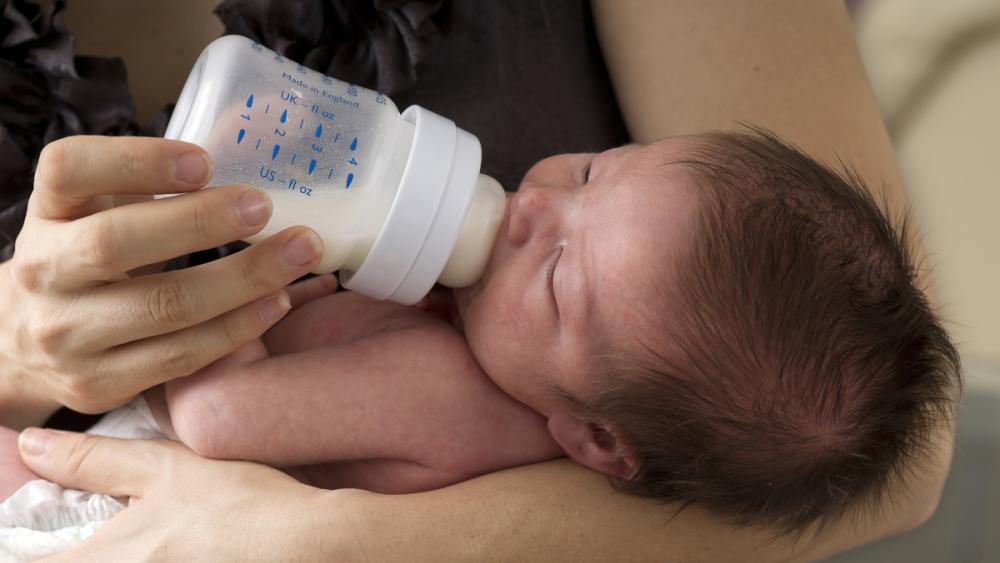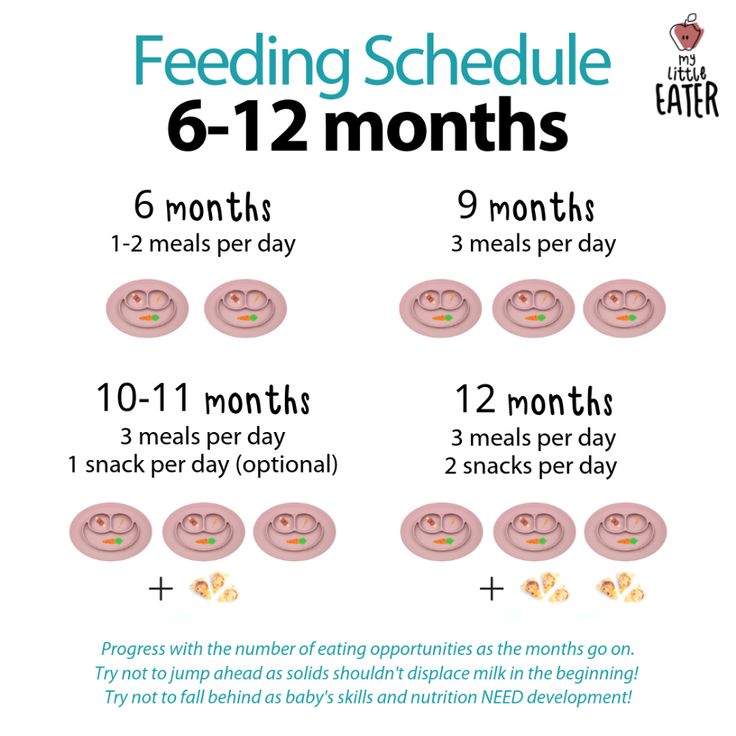What kind of milk do you feed baby wild rabbits
Caring for Newborn Baby Rabbits
IF THESE ARE WILD BABIES
It’s that time of year again. Wild babies everywhere. But are they at risk?
Wild rabbits hide their nests in plain view, often in the middle of your yard, bushes, etc. If you find a nest that has been disturbed, do the best you can to restore it and leave the babies in there. If a dog discovers the nest, do your best to restore it (with grass, leaves, whatever mama has used), make sure the kits are in there, and find a way to keep the dog(s) away from the nest. Mama will return for her babies and taking them away will seriously decrease their chance of survival. If you do not see the mama—DON’T WORRY—they only nurse their babies a few minutes a day, then they stay away so as to not draw predators to the nest.
If a kit is injured or an animal brings you an injured baby, if you have no choice but to help a baby, please do not try to care or it yourself—-get it to a rabbit vet or a wildlife rehabilitator
- Local wildlife rehabilitator: https://www.
nwrawildlife.org
- List of rabbit vets: http://rabbit.org/vet-listings/
The best thing you can do for wild babies is to leave them alone (restored to the nest) or, if injured, get them to a rabbit vet or wildlife rehabilitator.
DOMESTIC/PET RABBITS
WHERE TO PUT THE BABIES
Make the babies a soft nest area in a box with clean towels. We like to put one folded towel on the bottom and another bunched on top of that, so the babies can snuggle into it. You can also purchase soft nesting wool from a pet store and put that on top of the towel. You can also take whatever nesting material they were in and put it in the box as well. Cover the box almost entirely with a light towel, making sure that there will be enough air so the babies do not suffocate. Leaving about a one inch gap at the top is usually sufficient. Keep the babies in an out-of-the way, QUIET area, such as an adult’s bedroom. If the room temperature is between 68-72 degrees you will not need to provide extra heat, but if it’s cooler than that you will need to provide extra warmth. Use a heating pad set on low and slip it under one half only of the box. We do it this way so that the babies can move to a cooler area if it gets too warm. DO NOT put babies directly on heating pad, as babies can burn themselves very badly.
Use a heating pad set on low and slip it under one half only of the box. We do it this way so that the babies can move to a cooler area if it gets too warm. DO NOT put babies directly on heating pad, as babies can burn themselves very badly.
If the babies were with their mamma, but she is not caring for them (and you are sure she is ignoring them) you may need to separate her from them so they will not get hurt. Rabbit milk is very caloric and the kittens (baby rabbits) only nurse for a few minutes a day, so if you think that she is not caring for them based only on the fact you don’t see them feed…think again. If you do think they are being neglected, you can check: Are they cold? Are they making crying sounds for more than a few minutes before (or at) feeding time? Are they blue? Is the skin shriveled? Check for dehydration: gently pinch together the skin at the nape of the neck. If it sticks together or stays in a tent, they are dehydrated. A healthy kit has a round belly, is warm, gains weight on a daily basis, and snuggles with its litter mates. If they are dehydrated, cold, losing weight or becoming injured, of course, something must be done
A healthy kit has a round belly, is warm, gains weight on a daily basis, and snuggles with its litter mates. If they are dehydrated, cold, losing weight or becoming injured, of course, something must be done
WHAT TO FEED THE BABIES
Baby rabbits should be fed Kitten Milk Replacer (KMR) or goat milk, which you can buy at pet stores, or sometimes even a local veterinarian’s office. Because rabbit milk is the most caloric of all mammals, we add in one tablespoon of 100% heavy whipping cream (no sugar) to each can of KMR. Most kits will not nurse from the baby animal bottles you can buy at stores. Instead, use a sterile oral syringe, which can be purchased at most pharmacies. A better alternative are these nipples, which come the a syringe, but you may not be able to find them locally/right away (link).
It is best to feed baby rabbits no more than twice a day, but sometimes it takes more feedings to get an adequate amount into them, especially at first.
How much to feed varies greatly on what breed of rabbit you are feeding, and how big the kit is, but here is a basic guideline for the daily amount to feed a domestic rabbit who will be approximately 5-6 pounds as an adult (average rabbit size). You can increase the amounts as needed for larger breeds.
To help the kits maintain healthy gut bacteria, go to your local health food store (and get a bottle of ACIDOPHILUS. Ask for the capsules that have the “grainy stuff” inside (they are easier to mix than the “powdery stuff”) and add a bit to the formula at each feeding.
ALL amounts below should be divided into two feedings per day.
- Newborn – 1 week
- 4-5 cc formula
- 1-2 weeks
- 10-15 cc formula
- 2-3 weeks
- 15-30 cc formula
- 3-6 weeks, until weaned
- 30 cc formula
HOW DO I DO THIS?
Baby rabbits feed from their mothers while lying on their backs. You may loosely wrap baby in a soft face cloth or hand towel and lay it on your lap or in the crook of your arm. If bunny will NOT eat this way, of course, do the best you can. It is ABSOLUTELY CRUCIAL to let the baby eat at it’s own pace—especially if it is not suckling from the syringe willingly. If you squirt the liquid in too quickly you can aspirate (get liquid in) the lungs and the rabbit will suffocate.
You may loosely wrap baby in a soft face cloth or hand towel and lay it on your lap or in the crook of your arm. If bunny will NOT eat this way, of course, do the best you can. It is ABSOLUTELY CRUCIAL to let the baby eat at it’s own pace—especially if it is not suckling from the syringe willingly. If you squirt the liquid in too quickly you can aspirate (get liquid in) the lungs and the rabbit will suffocate.
Until their eyes open (10 days): After each feeding it is important to make the bunny defecate and urinate to keep the intestinal tract and urinary system running smoothly. Use a soft cloth or a cotton ball moistened with warm water and gently stroke the genital area until the bunny starts producing stool and urine. Keep stroking until the bunny stops. You are replicating the behavior of the mother rabbit who would lick her young to stimulate them to go to the bathroom. The stool will be soft and may be varying shades of green and yellow.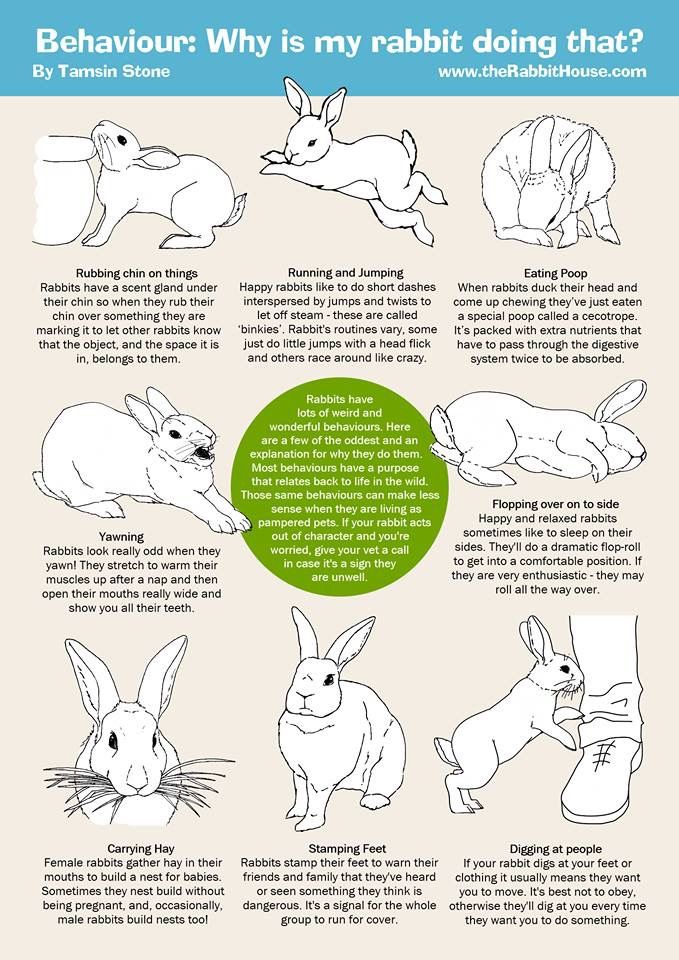 If the urine is brown and gritty, the buns are not adequately hydrated and you need to get them to a rabbit vet ASAP—-it is an emergency. Be sure to clean baby’s mouth with a damp cloth or paper towel, so that no milk dries in the hair.
If the urine is brown and gritty, the buns are not adequately hydrated and you need to get them to a rabbit vet ASAP—-it is an emergency. Be sure to clean baby’s mouth with a damp cloth or paper towel, so that no milk dries in the hair.
Baby rabbit eyes open at about 10 days of age. You may start introducing them to hay and pellets at this point, but no veggies or fruits yet. Just leave some timothy or orchard and alfalfa hay and pellets in a corner of the box where the babies can easily get to them. Make sure it the pellets are plain, high fiber and fresh, with no added goodies such as dried banana chips or seeds. Don’t ever leave a deep water dish in which a baby could drown; instead, use something shallow and rinse and fill it frequently.
If you have any questions, please contact us.
Your Question Answered: What Do You Feed Wild Baby Rabbits?
Written by The Rabbit Hole Hay Team
Regardless of how you stumbled upon these babies, here’s some things you need to know about what to feed baby wild rabbits. Before you go about this process, it’s important to know if the baby is a jack rabbit or cottontail rabbit. Jack rabbits are even more wild and will injure themselves or can die of trauma very easily. Please seek expert advice and let a professional take care of them if this is the case.
Before you go about this process, it’s important to know if the baby is a jack rabbit or cottontail rabbit. Jack rabbits are even more wild and will injure themselves or can die of trauma very easily. Please seek expert advice and let a professional take care of them if this is the case.
1. Make Sure The Rabbit Actually Needs Help And Is An Orphan
Are you sure that these wild baby rabbits are actually abandoned? How do you know? Rabbit parents can sometimes leave their nest for up to a whole day to forage in the woods and visit with other rabbits, and only come back to briefly check in and feed. If you have been watching the hole and haven’t seen the mom for at least two days or have even checked the rabbits and noticed they are skinny and calling for help, you may need to take action.
Read this to know if the babies are actually abandoned: How to Care for Orphaned Wild Cottontail Bunnies
2. Prepare A Place For The Rabbits To Stay
Create a nest like situation for the baby rabbits. This can be created by using a blanket or towel in a rabbit cage or hutch. The bunny’s environment should be cozily warm, but not hot. Smaller bunnies may require an incubator for help.
This can be created by using a blanket or towel in a rabbit cage or hutch. The bunny’s environment should be cozily warm, but not hot. Smaller bunnies may require an incubator for help.
3. Feed The Rabbits
If the baby rabbits you rescued are infants with their eyes closed or barely any fur, you’ll need to hand feed them formula. There are different opinions on what type of milk you should feed them, how often and how to do it. However, goat milk or kitten milk replacer is typically the milk of choice. NEVER feed them cow’s milk. Just remember, wild bunny food is different than domestic bunny food.
Consider these articles for methods:
- How to Care for Orphaned Wild Cottontail Bunnies
- How to Care for a Baby Wild Rabbit
- Orphaned Baby Bunnies: Wild and Domestic
Reminder: Any wild rabbit no matter the age should have constant access to hay, water and fresh greens similar to the type are used to in their wild environment. While it is not a baby’s main food source, they may learn how to eat solid food by nibbling on it.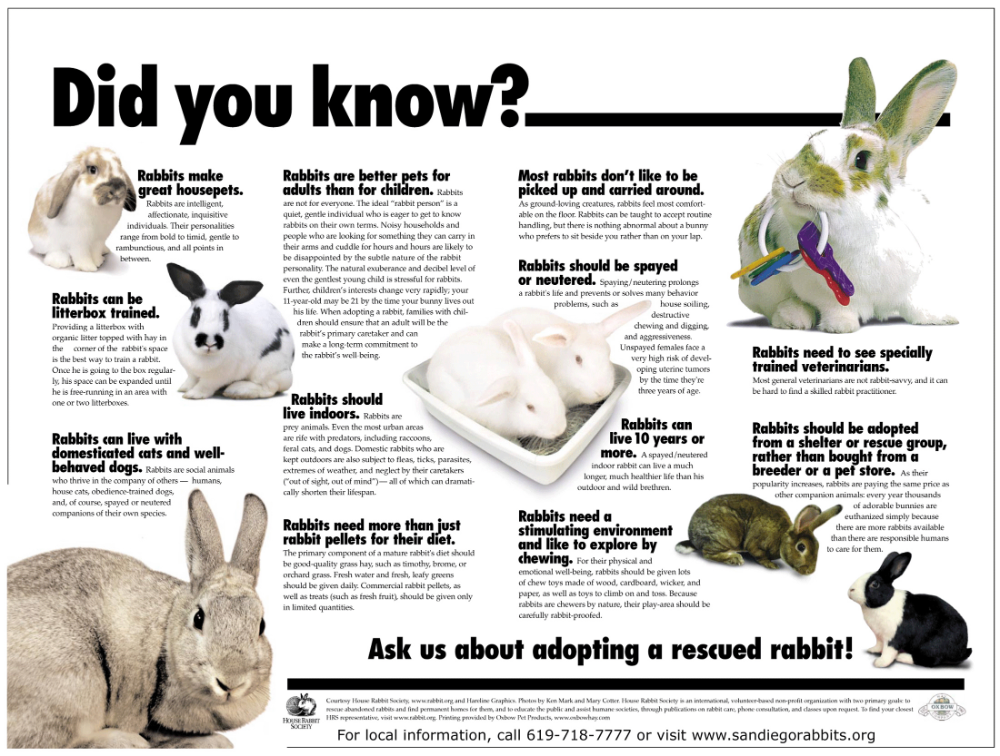
4. Stimulate The Bunnies To Go To The Bathroom
In order for very young baby rabbits (7 days old or less) to be able to go to the bathroom they must be stimulated. Think about how mother animals typically clean their young by licking them. Really, it serves a double purpose which is to help stimulate their organs to urinate and defecate. This might sound a little gross to you and if you’re not able to take this on then please take the rabbits to a shelter or vet.
Read this for instructions on how to stimulate a baby rabbit: Saving Wild Baby Rabbits
5. When In Doubt Take Them To A Vet Or Rabbit Shelter
If you don’t think you are able to care for the baby bunnies, are scared to do so or have noticed they aren’t doing well or one is injured, don’t mess around and take them to your local veterinarian or rabbit shelter immediately. Rabbits can pass away quickly. You don’t have time to spare if you notice something is wrong. Let the professionals take it into their own hands.
Eventually you will want to, well, maybe more like have to, let them free and out into their natural habitat again. When you take care of these bunnies make sure you keep in mind that they are wild and need to be released back to where they came from. So don't get too attached! They should not be kept as your pet unless they have an injury or will not survive on their own in the wild.
Again, this is a very big responsibility and takes a lot of time and dedication. Please consider taking the orphaned baby rabbits to an experienced rabbit shelter or veterinarian. We hope this helped answer your questions of “what do you feed wild baby rabbits?”
You can also download our Hay is for Rabbits eBook to know all about the different types of hay, the best ones to feed your rabbit based on their age, and more! That way the next time you run out of hay, you can purchase your next order with us with confidence.
Feeding Baby Rabbits - Without Female Rabbit - Features - Composition of the Ration
Breeding baby rabbits cannot be done in the same way every time, and in any case, the previous experience will be somewhat different from the next.
Even the same female rabbit may behave differently with offspring - for example, some cubs will receive plenty of maternal attention and care, while others may simply not survive without proper care. In this case, it is important for a person to know how to feed newborn rabbits without a rabbit and how to properly organize this process.
Contents []
- 1 Why are baby rabbits left without mother's milk and care?
- 2 What is the danger?
- 3 How to properly feed baby rabbits for the first 30 days?
- 4 Application of top dressings
There may be several reasons why a person may need to intervene in the process of raising babies:
- 0005 artificial feeding of rabbits obvious
- Mother's refusal to take care of babies is a common situation when a female does not want to feed her own offspring.
- Another rabbit does not want to nurse other people's babies
Newborn rabbits: photo
But it is still important for the farmer to know0005 what to feed newborn rabbits , since the survival of the offspring will depend on the person during this period.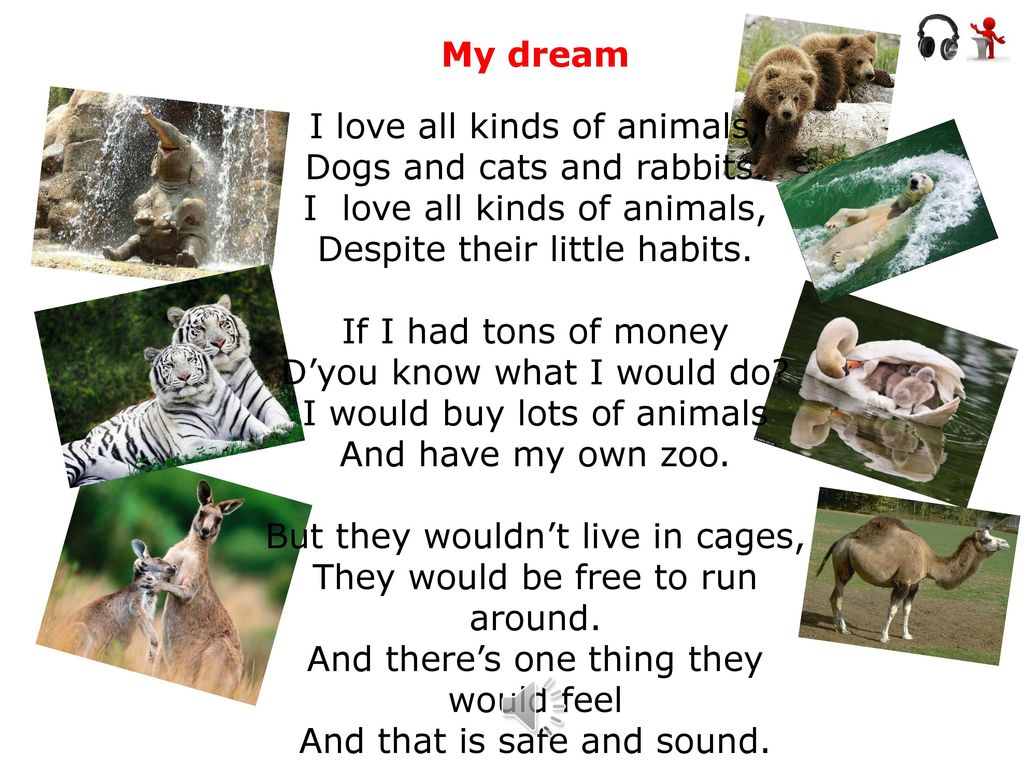
What is the danger?
What is the danger that babies will be left without food from their mother? It is known that babies receive the substances necessary for immunity precisely from mother's milk. Colostrum also contains the antibodies necessary to develop their own immunity, and therefore it is important to try to give babies at least these substances if further feeding from the mother is impossible. Otherwise, you should not hope for the survival of offspring, since the chances of babies for life are rapidly declining due to the lack of their own immunity.
How to properly feed baby rabbits for the first 30 days?
So, that same undesirable situation happened, and the babies were left without mother's milk. What should the farmer do in this case? Obviously, the baby's body is not yet strong enough to immediately start feeding heavy foods, and therefore you need to know what kind of milk to feed newborn rabbits . The first thing that comes to mind is to start feeding baby rabbits with cow's milk , but farmers do not have an unequivocal opinion on this matter. It is believed that this replacement can only be used when there are no other options, since this milk is very fatty and babies cannot always absorb it. In addition, it contains almost no substances useful for rabbits. But if there are no other options, then this substitute must be mixed with sugar-free condensed milk in a ratio of 4: 1.
The first thing that comes to mind is to start feeding baby rabbits with cow's milk , but farmers do not have an unequivocal opinion on this matter. It is believed that this replacement can only be used when there are no other options, since this milk is very fatty and babies cannot always absorb it. In addition, it contains almost no substances useful for rabbits. But if there are no other options, then this substitute must be mixed with sugar-free condensed milk in a ratio of 4: 1.
However, there are more acceptable analogues:
- Goat milk - similar to rabbit in composition, but not as fatty. However, it will not need to be bred with anything else, which is good for the farmer.
- Mother's milk substitute formulas available at veterinarians. You can use products not only directly for rabbits, but also for dogs or cats, since such food is perfectly absorbed by the body of newborns.
- Baby food - in question, is it possible to feed baby rabbits with infant formula , the composition of such nutrition plays an important role.
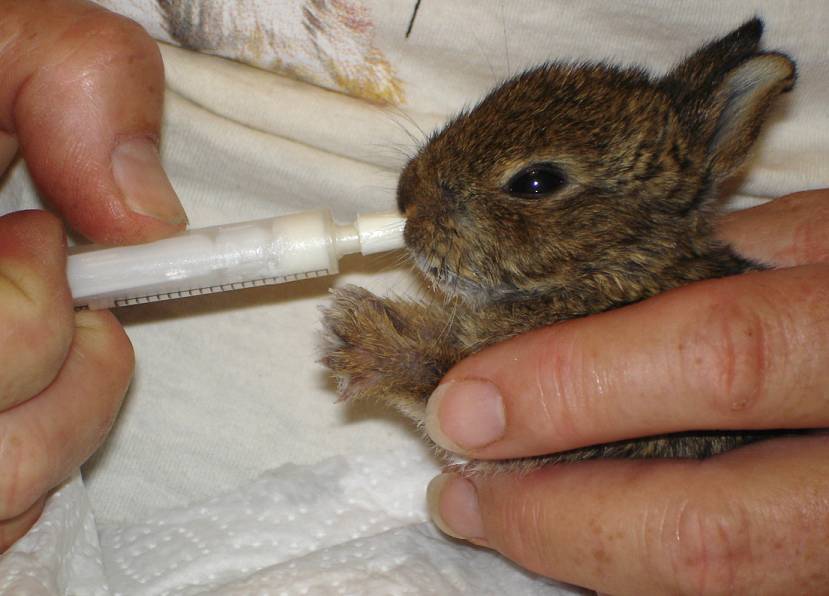 If it does not contain sugar and additives, then such milk powder can be used for feeding.
If it does not contain sugar and additives, then such milk powder can be used for feeding.
On the sixth day, fluff begins to grow in babies, on the 10th day they open their eyes. Until that time, for feeding, farmers need to feed babies using a syringe with special rubber nozzles and bottles for the mixture. If you do not have such equipment, you can use a pipette and a bottle of eye drops. Up to 10 days, be careful that the babies do not choke on food, and carefully pour it into their mouths.
If for rabbits up to 15 days old , the procedure should be as follows:
- Hold babies upright
- Wet the animal's mouth with milk so that it can lick it off by itself
- Avoid inhalation of liquid
- Keep mixture at +37 degrees
- Milk can be stored in the refrigerator for up to three days.
Baby rabbit feeding table
Let's figure out, what to feed two-week-old rabbits without a rabbit, as well as what to feed monthly rabbits, we use the following data:
- At the age of 1 day - milk or mixture drop by drop
- From 1 to 5 days - 4-5 times a day, 1 ml of nutrition
- From 5 to 14 days - three times a day, 25-30 g of the mixture
- From 17 to 30 days - twice a day.
 At this time it is possible to start feeding peas and hay to the rabbits, as they are already interested in the "adult" diet.
At this time it is possible to start feeding peas and hay to the rabbits, as they are already interested in the "adult" diet.
Feeding of rabbits after jigging starts on the 30th day, and also consists of root crops, vegetables, herbs, hay, compound feed and oats. At the same time, breeders advise mixing dry and wet food so that dry food does not irritate the respiratory tract of babies.
Introduction of top dressings
Even the highest quality milk is not able to fully provide babies with the necessary nutrients. Therefore, from the third week, they can additionally be given a little hay, and, if the process proceeds without diarrhea, then add carrots.
Advantages and disadvantages of artificial feeding
The advantages of artificial feeding include an increase in the survival of offspring, because under such conditions and with proper feeding, babies are more likely to survive and grow up healthy. But the disadvantages include the inability to control the sufficient intake of all nutrients and the difficulty in finding the right type of complementary foods.
But the disadvantages include the inability to control the sufficient intake of all nutrients and the difficulty in finding the right type of complementary foods.
How and with what to feed newborn rabbits
Tips to the hostess
Content of the article:
- How to feed newborn rabbits
- video
Newborn rabbits need
- photo
- Getty
with a large storage of pentification and a large stock of Pentishly. First of all, you need to decide on the choice of food.
What to feed newborn rabbits? Typically used for this:
- fresh cow's milk. This is the easiest option, but cow's milk is not fat enough for rabbits, so you need to dilute it in half with regular condensed milk;
- goat's milk is excellent for baby rabbits.
 It contains enough fat to meet the needs of the baby's body;
It contains enough fat to meet the needs of the baby's body; - milk powder for animals. It can be purchased at a pet store. It is diluted according to the instructions.
The milk temperature must be measured before feeding. It should be 36-37 ° C.
The pet store also sells special feeding equipment, but you can get by with a pipette or syringe without a needle. Before the first use, they must be washed well and doused with boiling water.
It is very important not to overfeed the animals. For newborn rabbits, the daily dose is 5 ml, no more than 1 ml should be given per feeding. Thus, the diet is also established: babies eat five times a day.
When the rabbits are 7-10 days old, the daily amount is doubled and is 10 ml. Two-week-old pups need 15 ml.
Milk should not be poured into the mouth in a continuous stream. The mouth must be moistened and wait until the rabbit licks everything.
It is necessary to closely monitor the well-being of babies.




